- VU is a public, two-year, comprehensive, community college that features a full-service student residential environment. Our primary mission is to provide associate degree and certificate programs in a wide variety of academic and occupational majors leading to entry to a four-year university or to the workforce.
School Highlights
Vincennes University serves 19,445 students (23% of students are full-time).
The college's student:teacher ratio of 19:1 is lower than the state community college average of 34:1.
Minority enrollment is 34% of the student body (majority Hispanic), which is less than the state average of 51%.
Quick Stats (2025)
- Enrollment: 19,445 students
- In-state tuition: $5,396
- Out-state tuition: $12,730
- Student:teacher ratio: 19:1
- Minority enrollment: 34%
- Source: Integrated Postsecondary Education Data System (IPEDS)
Top Rankings
Vincennes University ranks among the top 20% of public schools in Indiana for:
Category
Attribute
Community Size
School Overview
The teacher population of 1,044 teachers has stayed relatively flat over five years.
Vincennes University
(IN) Community College Avg.
Carnegie Classification
Baccalaureate/Associate's Colleges: Mixed Baccalaureate/Associate's
Baccalaureate Colleges: Diverse Fields
Institution Level
Four or more years
Four or more years
Institution Control
Public
Private, for profit
Total Faculty
1,044 staff
119 staff
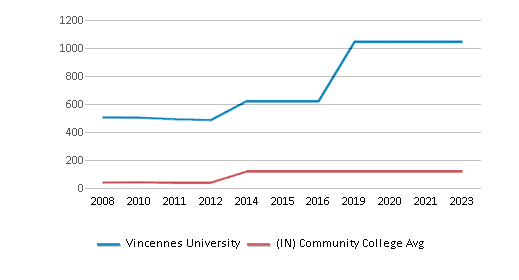
School Calendar
Student Body
The student population of Vincennes University has grown by 12% over five years.
The student:teacher ratio of 19:1 has increased from 15:1 over five years.
The Vincennes University diversity score of 0.53 is less than the state average of 0.65. The school's diversity has declined by 9% over five years.
Total Enrollment
19,445 students
1,548 students
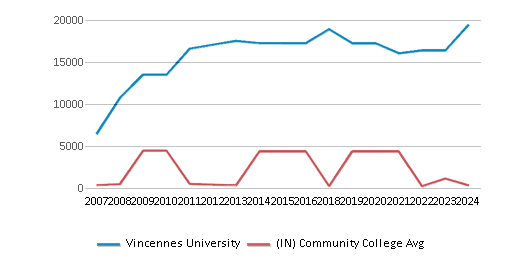
Student : Teacher Ratio
19:1
34:1
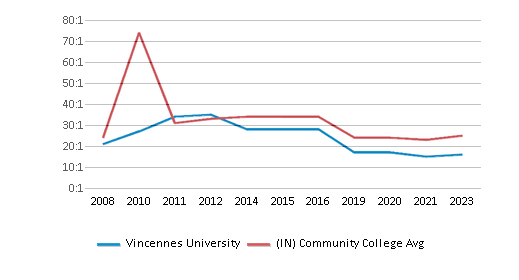
# Full-Time Students
4,503 students
502 students
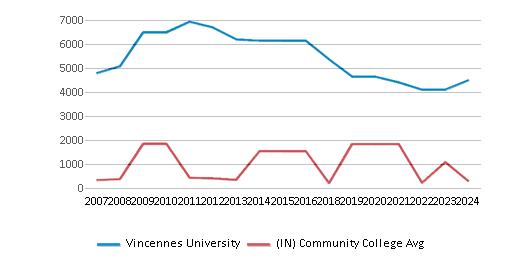
# Part-Time Students
14,942 students
2,765 students

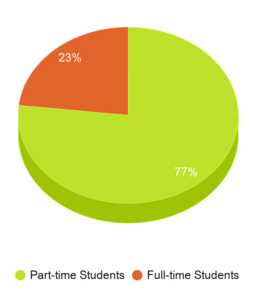
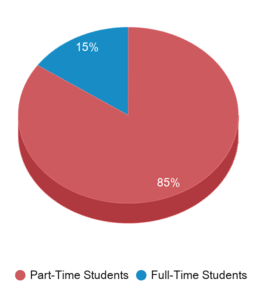
# Enrollment Undergraduate
194 students
289 students
# Full-Time Undergraduate Students
4,503 students
502 students
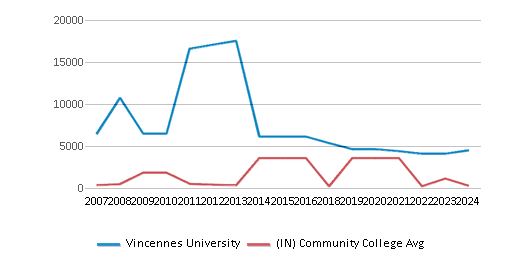
# Full-Time Graduate Students
n/a
5,260 students
# Part-Time Undergraduate Students
14,942 students
180 students
# Part-Time Graduate Students
n/a
35 students
Total Dormitory Capacity
1,802 students
83 students
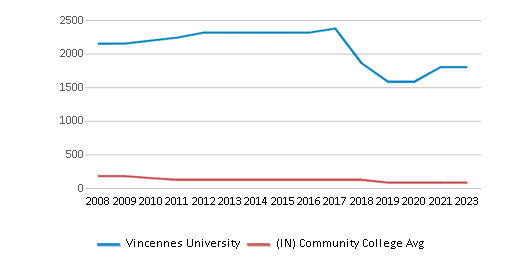
% American Indian/Alaskan
n/a
1%
% Asian
3%
2%
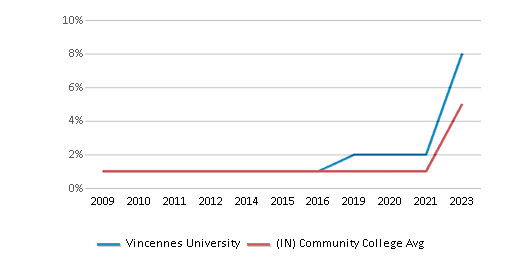
% Hispanic
14%
4%
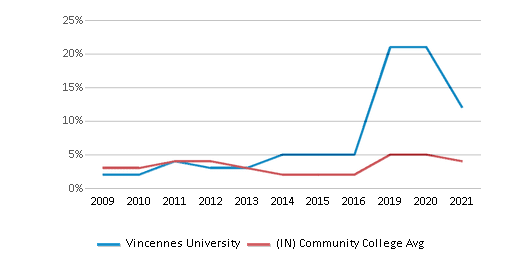
% Black
10%
9%

% White
66%
49%
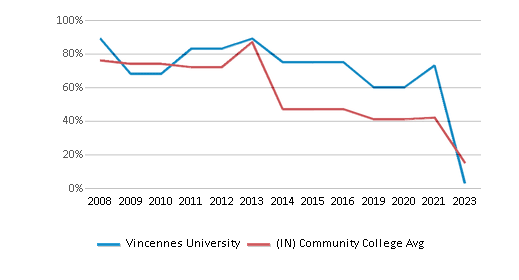
% Hawaiian
n/a
n/a
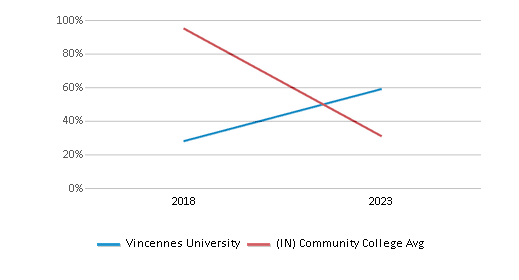
% Two or more races
4%
3%
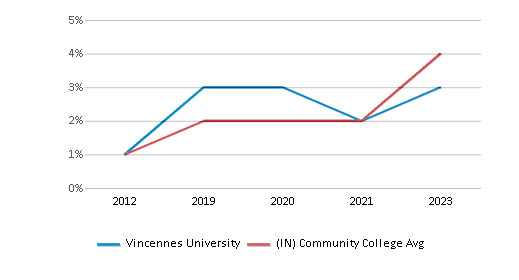
% Non Resident races
1%
n/a
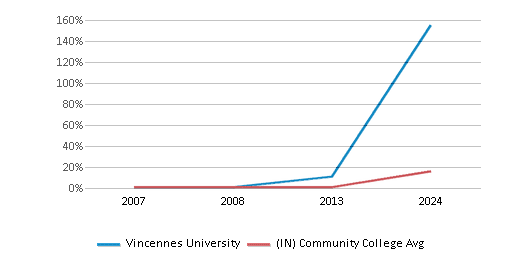
% Unknown races
1%
32%
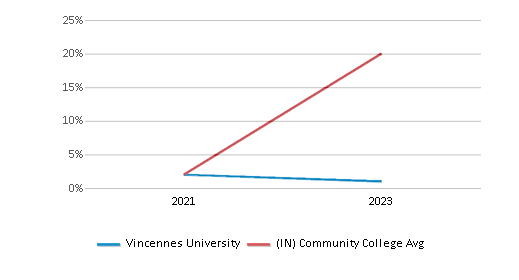
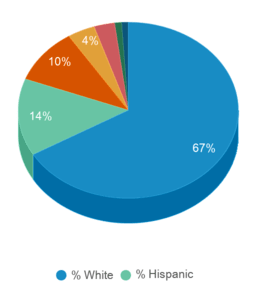
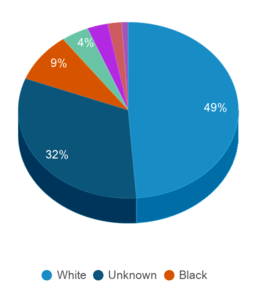
Diversity Score
0.53
0.65
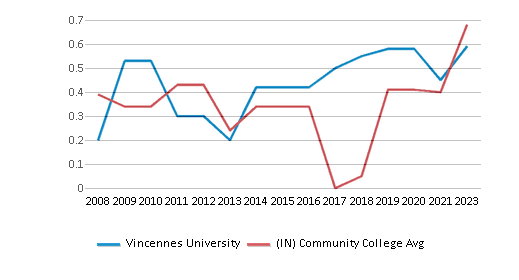
College Completion Rate (Students who graduate in less than 4 years)
n/a
0.5824%
College Completion Rate (Students who graduate in 4 years or more than 4 years)
0.3346%
0.3346%
Average Graduate Earnings (10 Years)
$34,600
$32,100
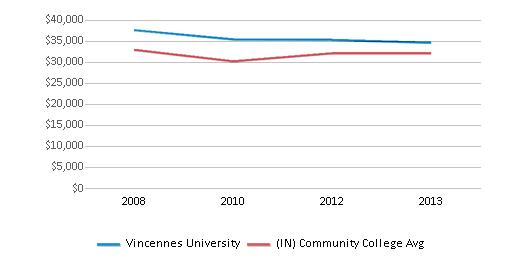
Tuition and Acceptance Rate
The public in-state tuition of $5,396 is more than the state average of $3,695. The in-state tuition has declined by 13% over four years.
The public out-state tuition of $12,730 is more than the state average of $7,846. The out-state tuition has declined by 13% over four years.
In-State Tuition Fees
$5,396
$3,695
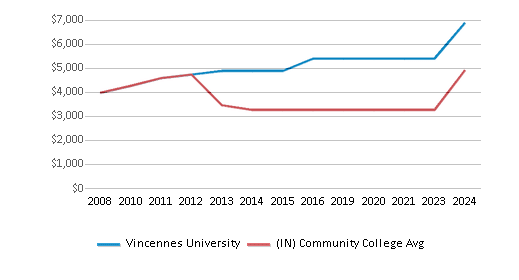
Out-State Tuition Fees
$12,730
$7,846

% Students Receiving Some Financial Aid
92%
84%
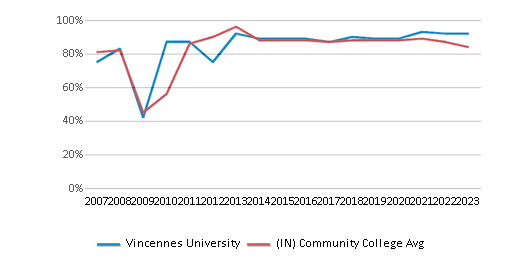
Median Debt for Graduates
$12,596
$12,000

Median Debt for Dropouts
$6,901
$5,500
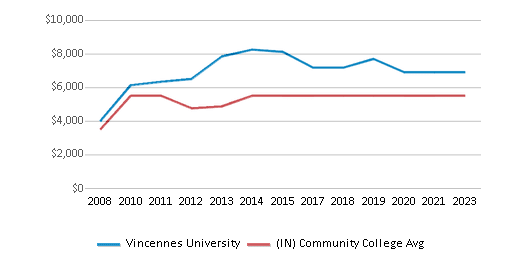
Acceptance Rate
n/a
74%
SAT Reading
n/a
485
SAT Math
n/a
485
SAT Writing
n/a
465
ACT Composite
n/a
22
ACT English
n/a
21
ACT Math
n/a
21
Source: 2024 (or latest year available) Integrated Postsecondary Education Data System (IPEDS) , School Administrators
School Notes
- Founded in 1801, VU is now embarking on its third century of providing top quality education. VU is Indiana's first college and is one of the oldest in America. It is the birthplace of one of the nation's first two-year institutions of higher learning. Founded by U.S. President William Henry Harrison,VU is located in Indiana's first city, Vincennes, once the capital of the vast Indiana Territory. The modern, 120-acre Vincennes campus is surrounded by historical treasures, such as Harrison's frontier mansion, the George Rogers Clark National Historical Park--site of an American Revolutionary War battle--and the legendary Wabash River. A few steps away, you will find one of the most modern campuses in the state--currently undergoing the largest building expansion in history. Opening this year is VU's new Donald G. Bell Student Recreation Center and the Red Skelton Performing Arts Center. Situated on the banks of the Wabash River, the 100-acre VU campus includes more than 30 modern buildings featuring red-brick construction consistent with the first campus building, the 1803 home of VU's founder, William Henry Harrison. The Harrison mansion is open for tours. The campus also features red-brick walkways, abundant landscaping, and easy access to the legendary Wabash River and the George Rogers Clark National Historical Park. In addition to our 173-acre, residential campus in Vincennes, we also have a campus in Jasper, an Aviation Technology Center in Indianapolis, and an American Sign Language program at the Indiana School for the Deaf. We also offer classes on military bases across the country. In 2001-2002, VU conferred some 1,250 degrees in Arts, Science, and Applied Science, plus Certificates of Graduation and Certificates of Program Completion. VU students come from all 92 Indiana counties, 25 other states and 34 foreign countries.
Frequently Asked Questions
How much does Vincennes University cost?
Vincennes University's tuition is approximately $5,396 for In-State students and $12,730 for Out-State students.
What schools are Vincennes University often compared to?
Vincennes Universityis often viewed alongside schools like Ivy Tech Community College by visitors of our site.
What is Vincennes University's ranking?
Vincennes University ranks among the top 20% of community college in Indiana for: Largest student body.
Recent Articles

Obtaining Your Bachelor's Degree at a Community College
Explore the evolving landscape of community colleges offering bachelor's degrees, addressing affordability, accessibility, and workforce needs.

A to Z of Community College Certificates and Courses
From business and healthcare to technology and skilled trades, the article showcases the breadth of options available to students seeking to enhance their knowledge, develop new skills, or pursue career advancement.

What is a Community College?
This comprehensive guide explains what a community college is, its history, and its role in higher education. It covers the types of programs offered, differences from four-year colleges, benefits of attending, and important considerations for prospective students, providing valuable insights for those exploring educational options.









